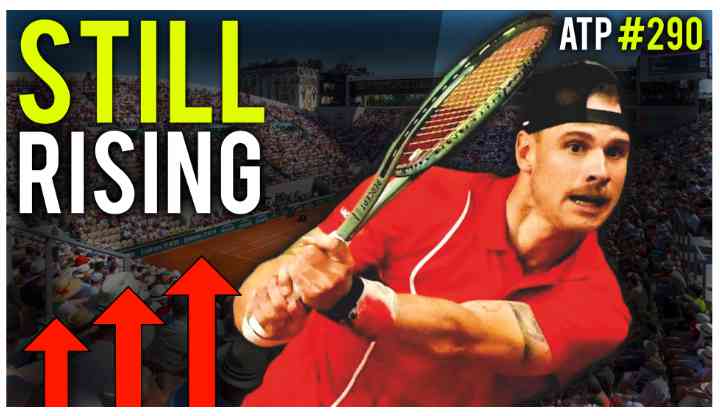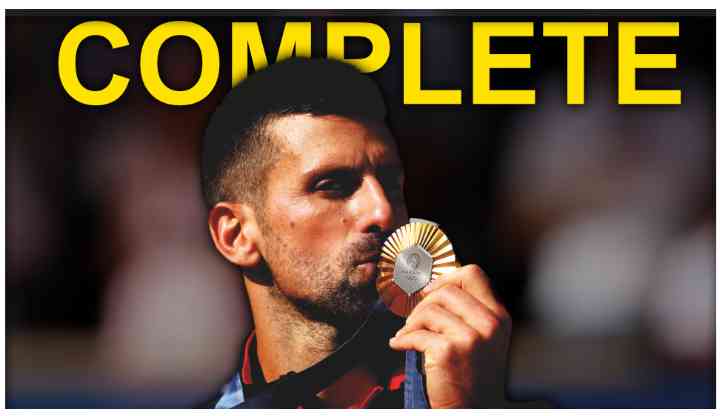Making History
More than bragging rights were on the line when Novak Djokovic met Andy Murray in the final of the 2016 French Open. A career Grand Slam was on order if Djokovic could take the title in Paris. Unfortunately for Novak, their last meeting resulted in a 6-3, 6-3 victory for Murray on clay in Rome. Murray’s made some improvements recently, especially on his forehand, serve and return. Those improvements, plus what he already brought to the table made winning a French Open title a difficult task for Djokovic.
Serve +1 Forehands
The biggest factors in this match tactically were Murray’s 1st serve and the first ball he received from Djokovic on the return of serve; the serve +1. Murray’s stronger side between his forehand and backhand has historically been his backhand. For most players on tour it’s the opposite, but some recent changes in Andy’s forehand have allowed him to get more power on the stroke. I’m releasing a video on those changes in the next week which will go more in depth on those changes.
1st Serve = Best Serve
There were multiple factors that let Murray storm through the first set against Djokovic, most notably his first serve percentage and his ability to hit a forehand on his serve +1. As we see in the chart below, Andy served 65% in the first set and hit a serve +1 forehand on his first ball of the rally 62% of the time. He hit a serve +1 backhand just 38% of the time. Djokovic had more difficulty controlling his return of serve direction when Murray made his first serve and that let Murray dictate with his forehand.
Making Novak Miss
It was up to Djokovic to figure out what to do against this combination. Clearly his longtime rival turned his forehand into a legitimate weapon, the question was how to combat it. Murray forced Djokovic into errors once the ball was in play 28 times, 20 of those were Murray forehands while just 4 were backhands. Andy also hit 15 winners in the match, 7 were forehands, 4 were backhands and the other four consisted of a volley, one return of serve and two overheads. We see a breakdown in the chart below of Murray’s ability to force Djokovic into errors.
Problem Solver
Murray slipped on his 1st serve percentage in set 2 and continued the trend the rest of the match. Andy made just 50% of his 1st serves in set 2, 54% in the third set and 42% in the fourth and final set. Djokovic capitalized on this, when Murray made a 1st serve in the match he was rewarded with a forehand 66% of the time on his serve +1. When Murray was forced to use his second serve he was able to hit a forehand off the Djokovic return of serve just 27% of the time, the other 73% were backhands! We see the large disparity in the chart below when Murray was forced to hit a second serve.
Success
Novak’s ability to aim his return of serve at the Murray backhand was one of the biggest reasons for his victory. He used that to keep Murray from attacking him early in the point and that gave him the opportunity to be aggressive before Andy could. Novak made a conscious decision to aim his return of serve at Andy’s backhand side and Murray made it easier for him to do it by making few first serves. Andy could have picked up on this and combated it by taking some speed off his first serve to make a higher percentage of them. That may have given him the opportunity to hit more serve +1 forehands in the match and keep the pressure on Novak. Instead, Djokovic found his backhand more frequently and used it so he could be aggressive in the point before Andy could.
Final Thoughts
-Andy’s inability to maintain a higher first serve percentage let Novak find his backhand on the return.
-Novak did an excellent job of directing as many balls as he could to the Murray backhand.
-The last three sets Djokovic was very careful on how he hit to the Murray forehand, he went to that side when he could be very aggressive or had Murray on defense. That prevented Andy from getting aggressive on that side as frequently as he did in the first set.










